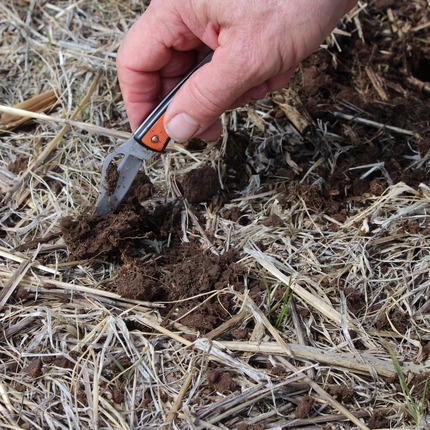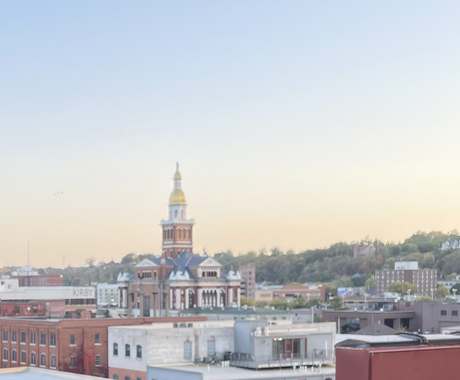By Katie Rock, former staff member
Climate change can be difficult to fully wrap your mind around. My fear is that more people will engage only after facing a crisis themselves—losing a home due to flooding, markets upended by multi-year droughts, water shortages, etc. We know that warming trends can accelerate or decelerate quickly depending on emissions and policies. Some analysts consider the last few years to be an accelerating period. What we do not know is when we will have crossed a threshold from which we cannot return. Carbon emissions increased in 2018 to nearly twice the rate seen in 2017 after three years of little to no increases.
This summer, two major reports were released with serious outlooks for our future in facing climate change. The Fourth National Climate Assessment presented the climate change outlook facing the U.S. and weather variability for the next century. The Intergovernmental Panel on Climate Change released its fifth assessment report, including a deep dive on what it would take to limit global warming to 1.5° C. The Intergovernmental Panel on Climate Change report says our fate is not sealed, and we can still limit warming to 1.5° C if we make drastic changes by 2030. That means we have 11 years to transition to a carbon-free economy or we will face significant consequences.
So, how far behind are we, and how much do these new reports change the conversation? In 2017, James Hansen, who is a native Iowan and one of the top climatologists in the world, published a report with some updated figures. We have already warmed the world beyond 1° C and have enough carbon dioxide in the atmosphere to commit ourselves to at least 1.3° C. To stay at or below 1.5° C would mean keeping atmospheric carbon dioxide concentration to 350 parts per million (ppm) or lower, hence the name of the activist group 350.org. We crossed the threshold of 400 ppm in 2013.
The goal of the Paris Climate Accord of 2015 was to commit nations to pursue the common goal of limiting warming to 2° C. To some eyes, the two reports released this summer presented a slightly more optimistic path forward. But, even the goal of 2° C would mean sea level rises of 20 to 25 feet and possibly higher, and a doubling of the current warming we are living in.
Our best path forward is to stay focused on solutions. This means a dramatic increase in carbon-free energy such as wind and solar, or what experts call decarbonization. More states, cities, and even some utilities are stepping up and setting timelines to become 100 percent powered by clean energy. Another key element from all of the reports mentioned here is the need for negative emissions through soil health, and, specifically mentioned in the report, bioenergy with carbon capture and storage. A key benefit of bioenergy is that plants used for energy pull carbon from the atmosphere before being harvested. Negative emissions are yielded by combining the plant’s natural ability to retain carbon with capturing and sequestering carbon from manufacturing. Just down the road from our office in Nevada, Iowa, is a facility that will soon be making natural gas derived from plant cellulose in corn stalks.
The Midwest has a great opportunity to lead in the area of negative emissions. We believe soil health can play an even larger role than bioenergy in building a healthier climate and retaining our agriculture productivity. Our rich soils can act as a carbon sink by restoring soil health and topsoil. The most recent farm bill includes a few efforts to expand work in this area.
At the same climate summit that resulted in the Paris Accord in 2015, a new effort kicked off focused on rebuilding agricultural soils around the world. The “4 per 1000” Initiative is based on this simple premise: “An annual growth rate of 0.4 percent in the soil carbon stocks, or 4 percent per year, would halt the increase in the CO2 concentration in the atmosphere related to human activities.”
In 2019, the Center for Rural Affairs will kick off a renewed effort to engage rural communities on the challenges and opportunities with climate change and clean energy. While large cities across the country are taking on their own climate initiatives, rural communities can offer valuable insight and cannot be left out of these conversations. We are hiring a policy assistant in Iowa to expand this work. We will soon host an event in a community near you, so please get in touch with us. Join our email list, talk with your friends and neighbors, and look for more updates soon.
Also, feel free to reach out to us at any time at [email protected], and share your thoughts, questions, fears, and attitudes on this topic. As we tackle the challenge of climate change together, rural communities will be at the center of our work.
Feature photo: We believe soil health can play an even larger role than bioenergy in building a healthier climate and retaining our agriculture productivity. Our rich soils can act as a carbon sink by restoring soil health and topsoil. The pictured soil, in southern Kansas, is held together with cover crop roots. Cover cropping is just one effort in the most recent farm bill to expand work in this area. | Photo by Rhea Landholm





